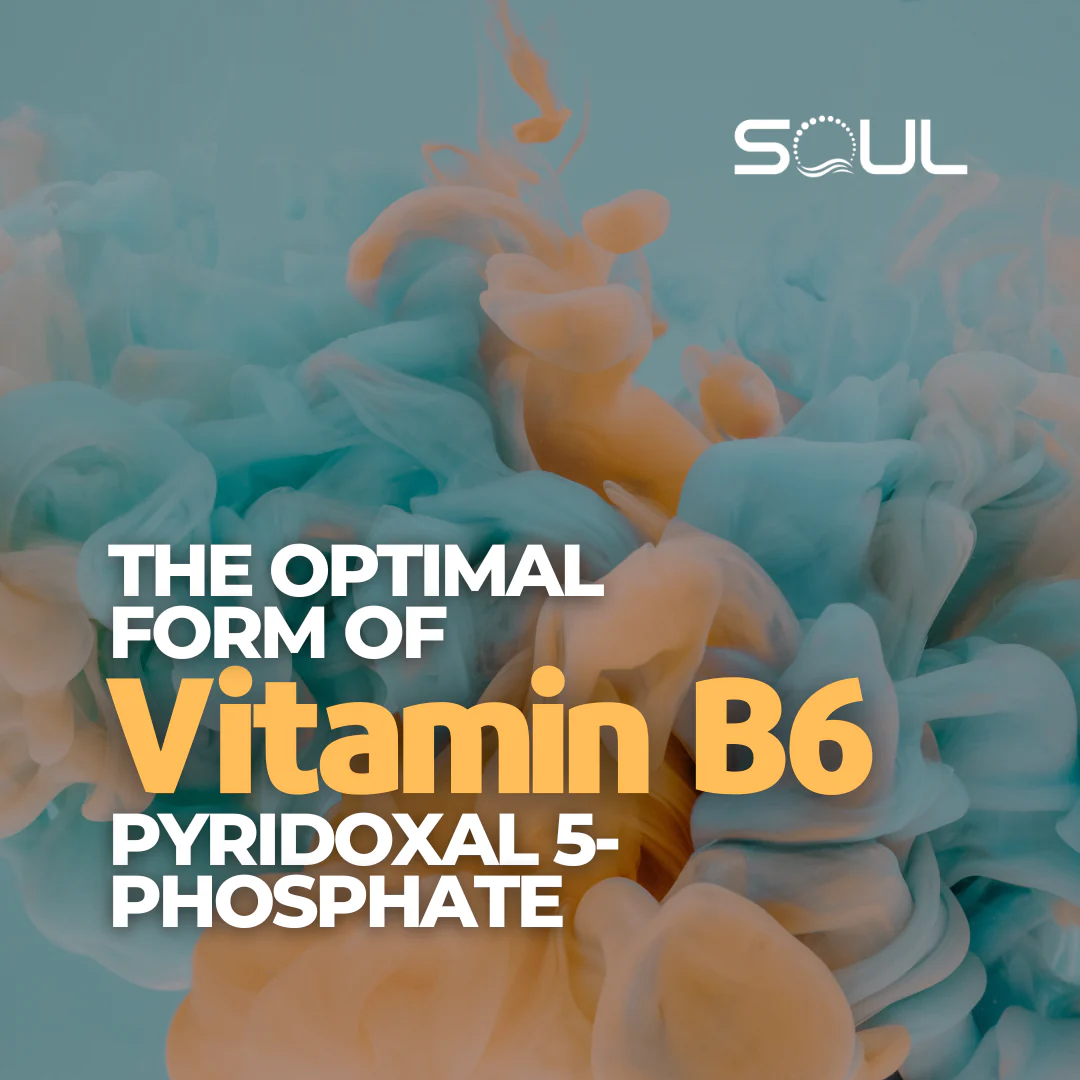
Vitamin B6 P5P: The Unsung Hero of Biochemical Symphony
Vitamin B6 is no ordinary member of the B-vitamin family. It has its virtuoso, Pyridoxal 5-phosphate (P5P), a derivative so vital to our metabolic machinery that it almost conducts an orchestra of life-sustaining reactions. P5P doesn’t merely participate in biochemical processes—it enables them. And like a master craftsman working behind the scenes, its actions, though often unnoticed, are what make the entire performance possible. Let’s dive deeper into this biochemical gem and explore how P5P pulls the strings of life in your body.
The Master Coenzyme: P5P's Command of Amino Acids
The importance of amino acids is drilled into us as the building blocks of proteins, but P5P takes the stage as the indispensable coenzyme that catalyzes their transformation. Through its role in amino acid metabolism, P5P is the silent force behind decarboxylation, stripping away carboxyl groups and driving the synthesis of neurotransmitters such as serotonin and dopamine. These neurotransmitters are not just brain chemicals; they are the essence of mood, motivation, and the human experience.
Consider tryptophan and histidine, amino acids that, under P5P’s guidance, become serotonin and histamine—molecules crucial for regulating mood, sleep, and immune responses. Without P5P, the orchestration halts. The decarboxylation process stalls, and neurotransmitter production suffers. Mechanistically, this means less serotonin—a direct line to mood imbalances and compromised mental health. A body short on P5P is not only robbed of protein synthesis efficiency but loses the capacity to sustain the symphony of neurotransmitter creation.
Beyond Proteins: P5P’s Role in Energy and Fat Metabolism
P5P doesn’t stop at amino acids. Like a conductor fluent in multiple musical traditions, it shifts seamlessly into carbohydrate and lipid metabolism. When your body taps into stored glycogen for energy, P5P facilitates its breakdown into glucose, ensuring a steady supply of energy, whether you’re running a marathon or tackling a long workday. Without P5P, energy production hits a bottleneck. Glycogen molecules remain stubbornly intact, and fatigue sets in—a biochemical standstill.
And then, P5P pivots once more, this time into the complex domain of lipid metabolism. Here, it helps in the synthesis of sphingolipids, those unsung heroes embedded within cell membranes. Think of sphingolipids as the high-tensile framework that keeps cell membranes fluid yet firm, a structure without which cell communication and barrier function would falter. P5P's role here is nuanced but vital, underscoring its far-reaching influence over cellular health.
The Fragility of P5P and the Body's Resilience
As vital as P5P is, it’s not immune to the perils of modern food processing. Sensitive to heat, light, and alkalinity, P5P is often destroyed during food preparation. But here’s where the body’s biochemical resilience comes into play: it can synthesize P5P from pyridoxine (vitamin B6). Nature, it seems, always has a backup plan. The challenge lies in ensuring a sufficient intake of vitamin B6—be it from meats, fish, grains, or legumes—to keep P5P levels thriving.
The Consequences of Deficiency: A Mechanistic Look
A shortage of vitamin B6—and by extension, P5P—ripples through the body like an abrupt pause in a symphony. One of the most glaring results is anemia. Hemoglobin synthesis is impossible without P5P, making this coenzyme essential for oxygen transport. Low P5P levels lead to underwhelming hemoglobin production and a cascade of fatigue and weakness. The skin, too, tells a story; dermatitis becomes a visible indicator of deficiency, while impaired P5P function in the immune system results in fewer antibodies and sluggish white blood cell production.
How to Keep the Biochemical Orchestra Playing
The good news is that maintaining healthy P5P levels is within reach. A diet rich in B6-heavy foods—think poultry, fish, whole grains, and legumes—is your first line of defense. And for those who might still fall short, dietary supplements offer a reliable backup to ensure your body's biochemistry stays in perfect pitch.
Conclusion
Pyridoxal 5-phosphate may not headline health discussions as often as it deserves, but its impact is monumental. From amino acid and neurotransmitter synthesis to energy production and lipid metabolism, P5P orchestrates critical biochemical reactions that sustain life. Like the behind-the-scenes producer who ensures a hit show, P5P keeps your body’s systems running smoothly, protecting against anemia, dermatitis, and weakened immunity. In this quiet yet essential role, P5P reminds us that even the most complex symphonies rely on the often unseen conductor who keeps every note in tune.
These statements have not been evaluated by the Food and Drug Administration. This product is not intended to diagnose, treat, cure or prevent any disease. This article is for informational purposes only and is not a substitute for professional medical advice. Always consult your healthcare provider regarding any health concerns or before starting new supplements.
